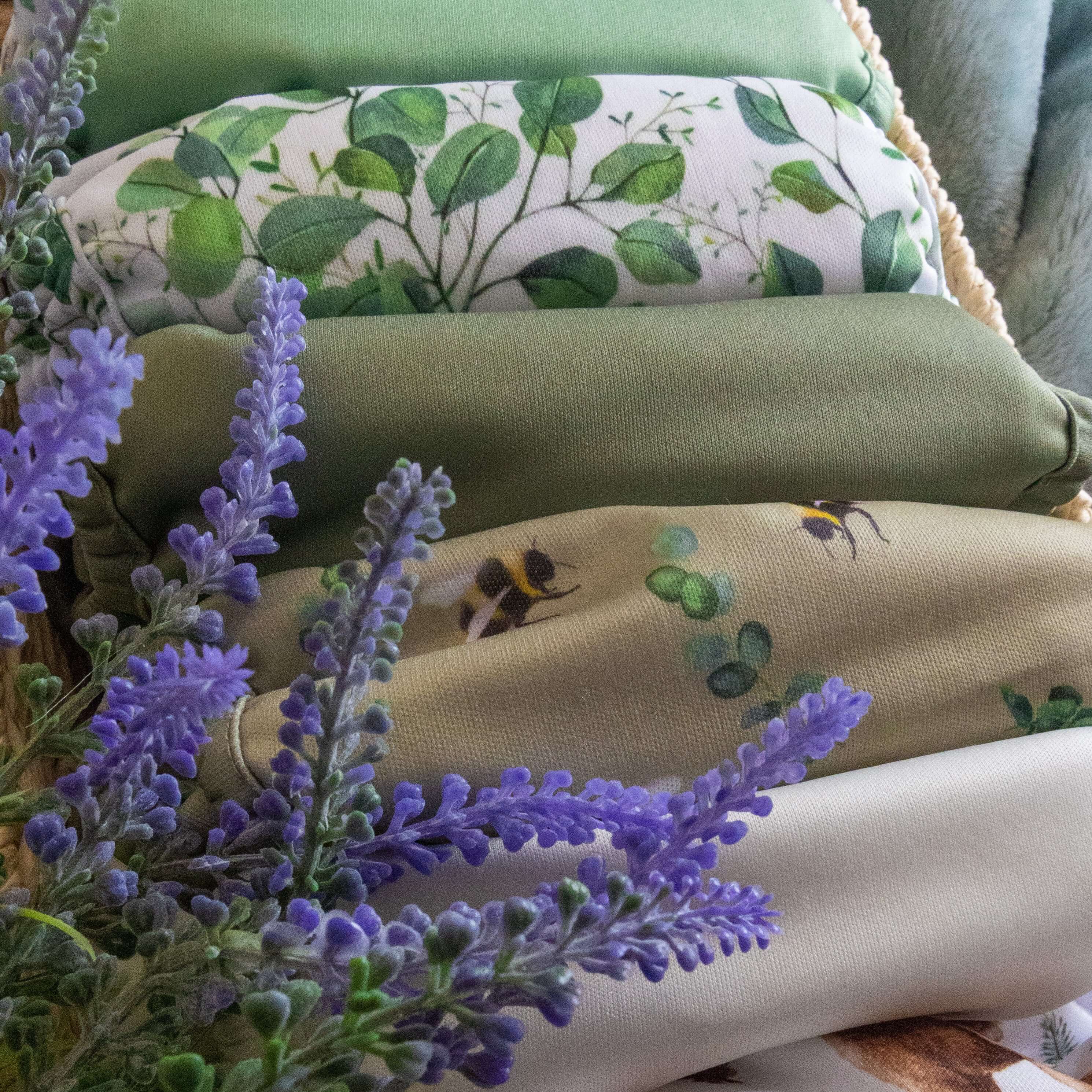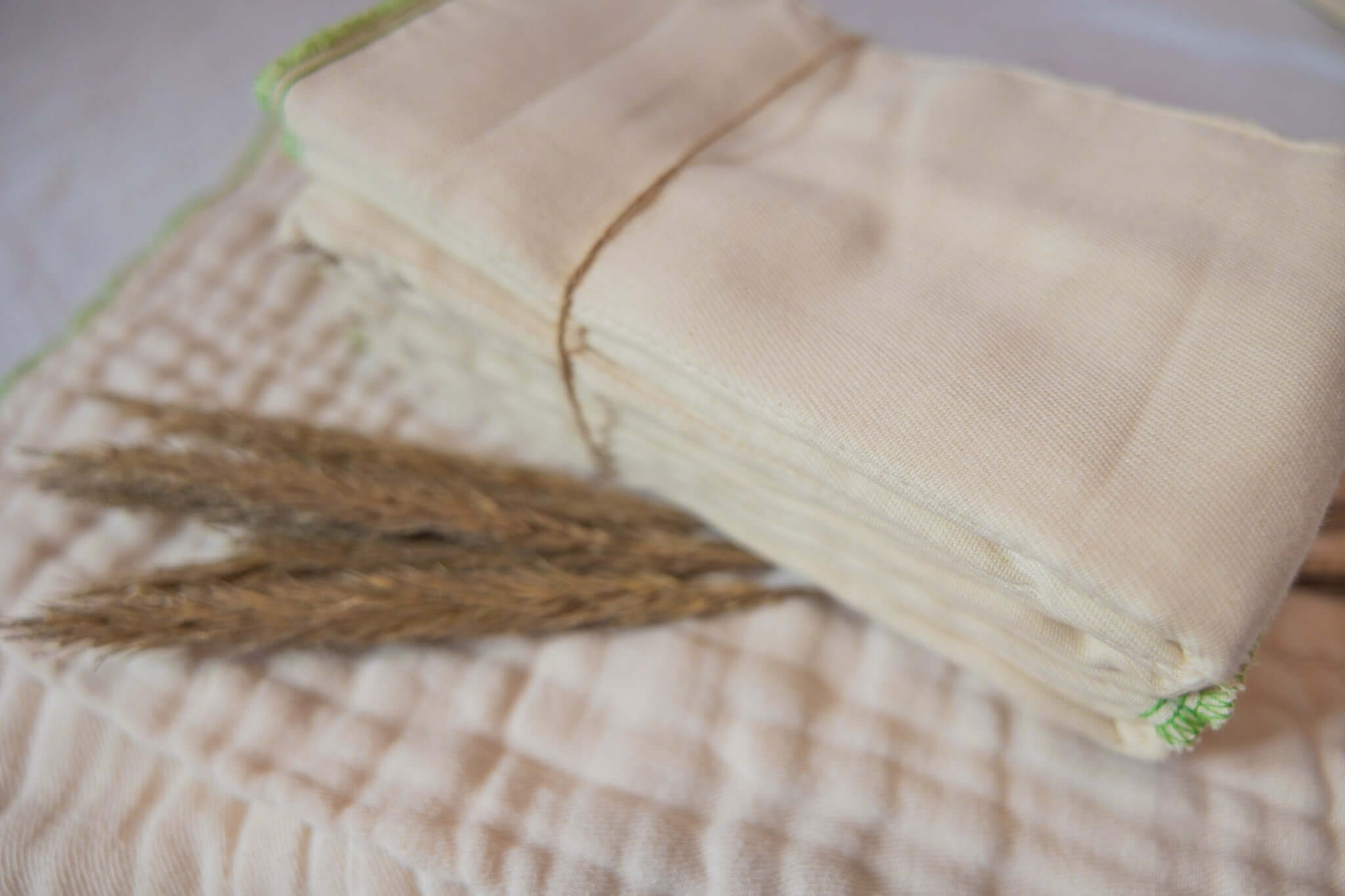
Comprehensive Guide to Reviving Stored Cloth Diapers
Cloth diapers are a treasured choice for eco-conscious parents, offering a sustainable and cost-effective alternative to disposables. However, when these diapers have been stored for an extended period, specific steps must be taken to ensure they are safe and effective for use. This guide provides best practices for assessing, cleaning, and maintaining stored cloth diapers, ensuring they remain in tip top condition for your baby.
Assessing the Condition of Stored Cloth Diapers
Inspect for Damage
Begin by meticulously inspecting each cloth diaper for any signs of wear and tear. Hold each diaper up to the light, checking for holes, tears, or frayed edges that could compromise its performance. Damaged diapers are not only ineffective but can also cause discomfort and leaks, necessitating either repair or replacement.
Check Elasticity
Elasticity is paramount for a snug fit and leak prevention. Over time, the elastic in cloth diapers can deteriorate, losing its vital stretchiness. To test this, gently stretch the leg and waist elastics. If they feel loose, brittle, or fail to return to their original shape, it's time to replace or reinforce the elastic to maintain a secure fit.
Look for Stains and Discoloration
Stored cloth diapers often develop stains or discoloration over time. Examine each diaper closely for any visible marks. While some stains might be merely aesthetic, others could indicate the presence of mold or mildew, which requires immediate attention. Persistent discoloration could affect the diaper's appeal and, more importantly, its hygiene.
Smell Test
Engage your sense of smell in your assessment. A simple sniff test can reveal much about the condition of your stored diapers. Unpleasant odors, such as musty or sour smells, can indicate bacterial growth or poor storage conditions. Proper cleaning and sanitizing are crucial before use to ensure your baby's safety and comfort.
Preparing Cloth Diapers for Use After Storage
Pre-wash Routine
Initiate the revival process with a pre-wash to remove dust, residues, and mild odors accumulated during storage. Use a gentle cycle with cold water and a small amount of detergent. This preliminary wash helps prepare the diapers for a more thorough cleaning, ensuring they are free from surface contaminants.
Deep Cleaning Methods
For a comprehensive clean, wash the diapers in hot water with a cloth diaper-safe detergent. Steer clear of bleach and fabric softeners, as they can damage the fabric and diminish absorbency. Adding an extra rinse cycle ensures all detergent is rinsed out, preserving the diapers' effectiveness and longevity.
Sanitizing Cloth Diapers
Sanitizing is an indispensable step to eradicate any lingering bacteria or mold spores. Thoroughly rinse the diapers to prevent any potential skin irritation, ensuring they are safe for your baby.
Drying Cloth Diapers Properly
Drying is a critical phase in preventing mold and mildew growth. Line drying in the sun is ideal, as sunlight naturally disinfects and helps bleach out stains. If you opt for a dryer, use a low heat setting to protect the diaper's fabric and elastics, ensuring they remain in pristine condition.
Restoring Absorbency
Using Vinegar and Baking Soda
If your stored diapers have lost some absorbency, vinegar and baking soda can work wonders. Vinegar helps break down residues clogging the fabric fibers, while baking soda neutralizes odors and softens the fabric, restoring the diapers' functionality.
Stripping Cloth Diapers
Stripping is a deep cleaning process to remove detergent buildup and other residues from cloth diapers. Soak the diapers in hot water with a stripping agent or a mix of washing soda and detergent. Follow up with multiple rinse cycles to ensure all residues are eliminated, reviving the diapers' absorbency.
Handling Common Issues with Stored Cloth Diapers
Dealing with Mold and Mildew
Discovering mold or mildew on your cloth diapers can be alarming. Address this issue immediately and do not use the diapers beforehand. Gently scrub any affected areas before washing as usual. Ensure thorough drying to prevent mold recurrence and maintain diaper hygiene.
Addressing Persistent Stains
Stubborn stains can detract from the appearance of your cloth diapers. Treat these by soaking the diapers in hot water. For a natural alternative, apply lemon juice to the stains and lay the diapers in the sun. The combination of lemon juice and sunlight acts as a natural bleaching agent, restoring the diapers' appearance.
Eliminating Odors
Persistent odors can be a challenge. Combat these with a thorough wash and if your normal wash routine isn't cutting it, double check your machine for a new setting and check your detergent dosage. Ensure the diapers are completely dry before storing them to prevent any odor build-up, keeping them fresh for future use.
Maintaining Cloth Diapers for Long-Term Storage
Proper Storage Techniques
Proper storage is crucial for maintaining the quality of your cloth diapers. Ensure they are completely dry before storing to prevent mold and mildew. Use breathable storage bags or bins to allow airflow and prevent moisture buildup, preserving the diapers' condition.
Choosing the Right Storage Container
Select storage containers that are airtight yet breathable, such as cotton or mesh bags. Avoid plastic containers that can trap moisture and lead to mold growth, ensuring a healthy storage environment for your cloth diapers. A top tip: pillowcases are wonderful for diaper storage!
Ideal Storage Conditions
Store your cloth diapers in a cool, dry place away from direct sunlight. Excessive heat and light can degrade the fabric and elastic over time. Avoid storing them in damp areas like basements, attics, or bathrooms to ensure they remain in excellent condition.
Rotating Diapers in Storage
If you have a large stash of cloth diapers, rotate them periodically to ensure even wear and tear. This helps maintain the quality and longevity of the diapers, ensuring they remain effective and comfortable for your baby.
Additional Tips for Cloth Diaper Care
Using Cloth Diaper Liners
Cloth diaper liners can protect the diapers from stains and make cleaning easier. They also add an extra layer of comfort for your baby, enhancing the overall diapering experience.
Best Detergents for Cloth Diapers
Opt for detergents specifically designed for cloth diapers, free from fragrances, dyes, and additives. These detergents are gentler on the fabric and better for your baby's sensitive skin, maintaining the diapers' effectiveness and safety.
Avoiding Fabric Softeners
Fabric softeners can leave residues that reduce the absorbency of cloth diapers.
Frequently Asked Questions
How can I tell if my stored cloth diapers are still good?
Check for signs of damage, loss of elasticity, stains, and any unpleasant odors. A thorough inspection can help determine if they are still usable and safe for your baby.
What should I do if my cloth diapers smell musty?
A musty smell indicates mold or bacterial growth. Pre-wash the diapers, then sanitize them before a thorough wash, ensuring they are safe for use.
How do I restore the absorbency of my cloth diapers?
Stripping the diapers with hot water and a stripping agent can help remove residues that affect absorbency.
Is it safe to use bleach on cloth diapers?
Bleach can damage the fabric and reduce the lifespan of cloth diapers. It's best to use natural sanitizers for deep cleaning, maintaining the diapers' integrity, but do so sparingly and only when necessary.
What are the best storage conditions for cloth diapers?
Store cloth diapers in a cool, dry place away from direct sunlight. Use breathable storage containers to prevent moisture buildup and mold growth, preserving their quality.
How often should I rotate my stored cloth diapers?
Rotate your cloth diapers every few weeks to ensure even wear and tear. This helps maintain their quality and extends their usability, ensuring they remain effective over time.
A Simple Process Goes a Long Way
Proper care and maintenance of cloth diapers that have been stored for a while are crucial to ensure they remain safe and effective for your baby. By following these tips for inspection, cleaning, and storage, you can make the most of your cloth diaper investment and continue to provide a comfortable, eco-friendly diapering solution for your child.


